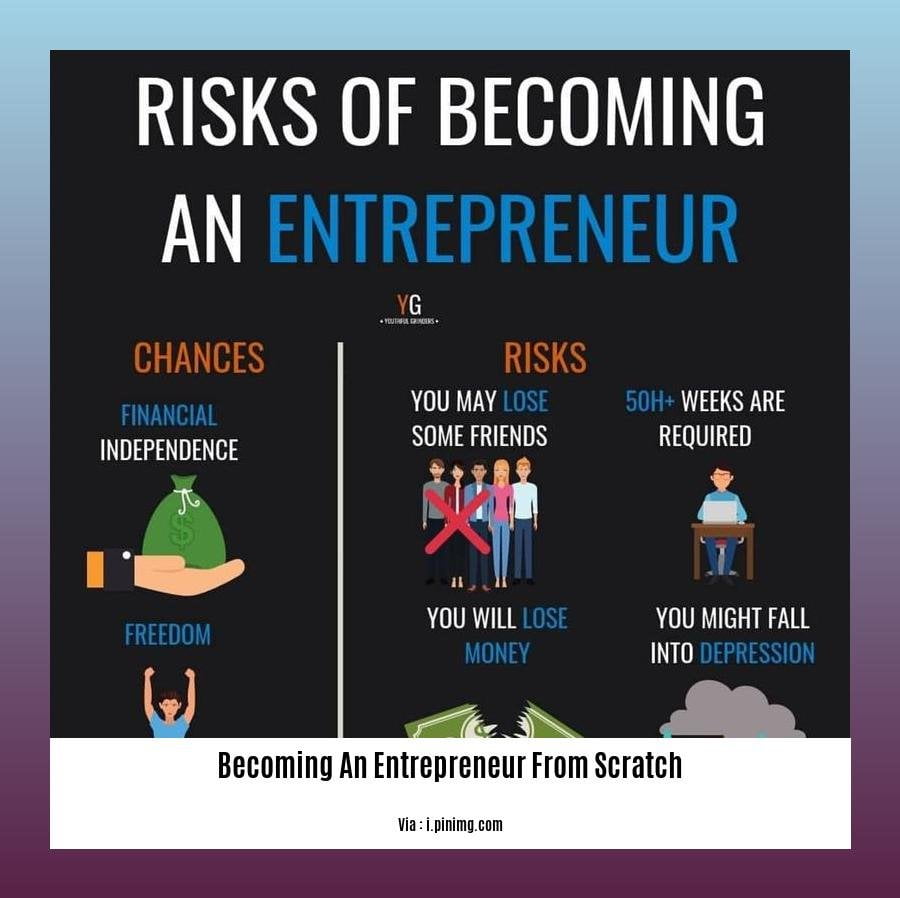Embark on the entrepreneurial journey with a comprehensive guide tailored for aspiring business owners. This blueprint for success provides a step-by-step approach to understanding the essence of entrepreneurship, navigating the world of business models, and crafting a thriving enterprise from scratch. Prepare to transform your ideas into tangible businesses, break free from the constraints of traditional employment, and seize financial independence.

Key Takeaways:
- Research successful startups to identify problem-solving and market opportunities.
- Choose a startup idea that aligns with your interests and skills.
- Develop a prototype or MVP to validate the profitability of your idea.
- Create a detailed business plan outlining your strategy, target market, and financial projections.
- Explore various funding options and prepare a compelling pitch to secure funding.
- Conduct user testing and beta launches to gather customer feedback and refine your product or service.
- Officially launch your business by establishing a legal entity, building a website, and marketing your offering.
- Network with other business leaders to share knowledge, collaborate, and explore potential partnerships and investments.
Becoming an Entrepreneur from Scratch
Embarking on the Entrepreneurial Odyssey:
1. Unravel the DNA of Successful Startups
- Delve into the world of thriving startups, deciphering their secret sauce for problem-solving and market dominance. Let their experiences illuminate your path.
2. Forge a Profitable Idea
- Identify burning problems or untapped opportunities that set the stage for a viable business venture. Align your idea with your passions and expertise, ensuring a deep-rooted connection.
3. Craft Your Business Blueprint
- Articulate your business strategy, outlining the roadmap for success. Define your target audience, map out financial projections, and devise a marketing masterplan.
4. Secure the Fuel for Growth
- Explore diverse funding avenues, from traditional loans to innovative investments and crowdfunding. Present a compelling case that ignites investor confidence.
5. Unleash Your Product or Service
- Transform your idea into a tangible product or service, offering a solution to your identified problem. Validate its viability through market testing and customer feedback.
6. Refine Through User Testing
- Gather critical feedback by conducting user testing or beta launches. Embrace insights to sharpen your offering and tailor it to your customers’ needs.
7. Launch Your Venture into the World
- Formalize your business, establish an online presence, and unveil your product or service. Market your offering to the world, showcasing its value and building momentum.
8. Foster Connections in the Business Realm
- Engage in industry events, join business associations, and establish alliances with potential partners and investors. Share knowledge, resources, and forge mutually beneficial relationships.
- Before starting your journey first steps to becoming an entrepreneur, it’s essential to understand the process and the challenges involved.
- If you’re new to the world of business how to become an entrepreneur with no experience can provide valuable guidance.
- This detailed entrepreneur from scratch guide will help you navigate the initial phases of building your entrepreneurial ventures.
Chapter 2: How to Choose a Business Model
Choosing the right business model is crucial for the success of your entrepreneurial journey. Here’s a step-by-step guide to help you navigate this important decision:
Step 1: Validate Your Business Idea
Before you dive into business model selection, ensure there’s a market demand for your product or service. Conduct thorough research to understand customer needs and identify potential competition.
Step 2: Consider Your Target Audience
Define your ideal customers and tailor your business model to their specific requirements. Understanding their demographics, pain points, and purchasing behavior will inform your pricing, marketing, and distribution strategies.
Step 3: Identify a Scalable Model
Choose a business model that can grow and adapt to meet future demand. Consider factors such as scalability, profitability, and sustainability to ensure your business has the potential for long-term success.
Step 4: Evaluate Your Resources
Assess your available resources, including funding, time, and expertise. Ensure you have the necessary capabilities to implement your chosen business model effectively.
Step 5: Determine Profitability
Calculate the potential revenue and expenses associated with your business model. Determine if it generates sufficient profit to cover costs and drive growth.
Key Takeaways:
- Market validation is essential to ensure there’s demand for your product or service.
- Understanding your target audience helps you tailor your business model to their needs.
- A scalable business model supports growth and future expansion.
- Resource assessment ensures you have the capabilities to implement your model effectively.
- Profitability is crucial for the sustainability and success of your business.
Most Relevant URL Source:
- Types of Business Models: Examples and Considerations
Chapter 3: How to Build Your Business in Two Steps
Key Takeaways:
- Define Your Niche: Determine your unique strengths, passions, and market demand.
- Choose a Business Model: Select a model that aligns with your niche and goals, such as a service or online course business.
Step 1: Identify Your Niche
- Introspect: Consider your skills, interests, and expertise to identify areas where you excel.
- Market Research: Explore market trends, identify unmet needs, and determine the potential for your niche.
- Unique Value Proposition: Define what sets your business apart, ensuring it offers a solution that others don’t.
Step 2: Select a Business Model
- Service Business: A profitable and quick way to start, offering your skills and expertise in fields such as consulting, coaching, or freelancing.
- Online Courses: Expand your reach by creating and selling courses that share your knowledge and expertise, scaling your income potential.
Conclusion
Building a business from scratch requires a well-defined niche and a business model that aligns with your goals. By following these two steps, you can lay the foundation for a successful entrepreneurial journey. Remember, the path may not always be easy, but with perseverance, passion, and a commitment to learning, you can turn your dreams into a thriving enterprise.











